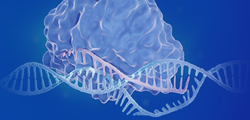-
REAGENT SERVICES
Hot!
-
Most Popular Services
-
Molecular Biology
-
Recombinant Antibody/Protein
-
Reagent Antibody
-
CRISPR Gene Editing
-
DNA Mutant Library
-
IVT RNA and LNP Formulations
-
Oligo Synthesis
-
Peptides
-
Cell Engineering
-
- CRISPR/Cas9 sgRNA
- CRISPR/Cas12a crRNA
- Prime Editing Guide RNA
- Base Editing Guide RNA
- HDR Templates
- gRNA + HDR Template Design Tools
- cGMP Guide RNA
- cGMP HDR Templates
- CRISPR/Cas Proteins
- CAR-T Knock-in Optimization Kit
- CRISPR Plasmids
- CRISPR gRNA Plasmid Libraries
- CRISPR Cell Lines
- Microbial Genome Editing
-
-
PRODUCTS
-
Most Popular Reagents
-
 Instruments
Instruments
-
Antibodies
-
ELISA Kits
-
Protein Electrophoresis and Blotting
-
Protein and Antibody Purification
-
Recombinant Proteins
-
Molecular Biology
-
Stable Cell Lines
-
Cell Isolation and Activation
-
 IVD Raw Materials
IVD Raw Materials
-
 Therapy Applications
Therapy Applications
-
Resources
-
- Pharmacokinetics and Immunogenecity ELISA Kits
- Viral Titration QC ELISA Kits
- -- Lentivirus Titer p24 ELISA KitHot!
- -- MuLV Titer p30 ELISA KitNew!
- -- AAV2 and AAVX Titer Capsid ELISA Kits
- Impurity Test ELISA Kits
- -- BSA ELISA Kit, 2G
- -- Cas9 ELISA KitNew!
- -- Protein A ELISA KitNew!
- -- His tagged protein detection & purification
- -- dsRNA ELISA Kit
- -- Endonuclease ELISA Kit
- COVID-19 Detection cPass™ Technology Kits
-
- Automated Maxi-Plasmid PurificationHot!
- Automated Mini-Plasmid PurificationNew!
- PCR Reagents
- S.marcescens Nuclease Benz-Neburase™
- DNA Assembly GenBuilder™
- Cas9 / Cas12a / Cas13a Nucleases
- Base and Prime Editing Nucleases
- GMP Cas9 Nucleases
- CRISPR sgRNA Synthesis
- HDR Knock-in Template
- CRISPR Gene Editing Kits and Antibodies
-
![AmMag™ Quatro Automated Plasmid Purification]() AmMag™ Quatro automated plasmid purification
AmMag™ Quatro automated plasmid purification
-
![Anti-Camelid VHH]() MonoRab™ Anti-VHH Antibodies
MonoRab™ Anti-VHH Antibodies
-
![ELISA Kits]() ELISA Kits
ELISA Kits
-
![Precast Gels]() SurePAGE™ Precast Gels
SurePAGE™ Precast Gels
-
![Quatro ProAb Automated Protein and Antibody Purification System]() AmMag™ Quatro ProAb Automated Protein and Antibody Purification System
AmMag™ Quatro ProAb Automated Protein and Antibody Purification System
-
![Target Proteins]() Target Proteins
Target Proteins
-
![AmMag™ Quatro Automated Plasmid Purification]() AmMag™ Quatro automated plasmid purification
AmMag™ Quatro automated plasmid purification
-
![Stable Cell Lines]() Stable Cell Lines
Stable Cell Lines
-
![Cell Isolation and Activation]() Cell Isolation and Activation
Cell Isolation and Activation
-
 IVD Raw Materials
IVD Raw Materials
-
![Quick
Order]() Quick Order
Quick Order
-
![Quick
Order]() Quick Order
Quick Order
- APPLICATIONS
- RESOURCES
- ABOUT US
- SIGN IN My Account SIGN OUT
- REGISTER

![Amino Acid Code Amino Acid Code]()
a Related Biological Terms
This Biology terms dictionary provides query services for biology and biochemistry terms. Please enter the biology or biochemistry terms you want to search.
List by Alphabet: A B C D E F G H I J K L M N O P Q R S T U V W X Y Z
a Related Biological Terms:
In nucleic acid chemistry, the orientation about the glycosidic bond of a nucleoside or nucleotide that places the base away from the sugar moiety; contrasted with the syn conformation, in which the base and sugar are oriented towards each other. (see also Z-DNA) Recommended reading: lipofectamine 2000 protocol
(see Lepore haemoglobin)
Descriptive of killer T-cells that recognize and respond to a cell- surface marker on a T-cell that is actively secreting immunoglobulin; contrasted with anti-idiotypic, descriptive of killer T-cells that are more restricted in that they recognize and respond to a cell-surface marker on T-cells that produce a specific immunoglobulin idiotype.
(see anti-ergotypic)
A polymerase with a higher than usual degree of fidelity in proofreading. Reha-Kranz, L.J. (1995) Trends Biochem. Sci. 20, 136-140
A gene that normally functions to regulate cell proliferation by suppression of the function of an oncogene; one cause of cancer is the loss or damage of anti-oncogenes. Klein, G. (1993) FASEB J. 7, 821-825
A bacteriophage protein that prevents the normal termination of transcription, e.g. the N protein that binds to nut (N utilization) sites, thus countering the action of the rho protein.
A natural, synthetic or semi-synthetic product, especially a pharmaceutical, that inhibits bacterial growth.
Introduction Antibodies, or immunoglobulins (Ig), are specialized proteins produced by B cells in response to specific antigens. They play a critical role in the adaptive immune system by recognizing and neutralizing pathogens such as bacteria and viruses. Beyond their physiological role, antibodies have become indispensable tools in research, diagnostics, and therapeutics due to their specificity and versatility. Structure of Antibodies Basic Structure Antibodies are Y-shaped glycoproteins composed of two identical heavy chains (H) and two identical light chains (L), held together by disulfide bonds. Variable regions (V): Found at the tips of the Y, responsible for antigen binding. Constant regions (C): Provide structural stability and mediate effector functions. Domains Fab (Fragment antigen-binding): Contains the V regions of both heavy and light chains, forming the antigen-binding site. Fc (Fragment crystallizable): Comprised of the constant region of the heavy chains, it mediates interactions with immune cells and the complement system. Antigen-Binding Site The antigen-binding site, formed by the V regions of the heavy and light chains, is highly specific due to the presence of hypervariable regions known as complementarity-determining regions (CDRs). Classes of Antibodies IgG: Most abundant in serum. Functions include opsonization, complement activation, and long-term immunity. IgA: Found in mucosal surfaces and secretions. Functions include mucosal defense and neutralization of pathogens. IgM: First antibody produced during an immune response. Functions as a potent activator of the complement system. IgE: Mediates allergic reactions and responses to parasitic infections. IgD: Primarily functions as a receptor on immature B cells. Mechanisms of Action Antigen Recognition Antibodies bind to specific antigens via their Fab regions, neutralizing pathogens or marking them for destruction. Effector Functions of the Fc Region Opsonization: Fc binds to Fc receptors on phagocytes, enhancing pathogen uptake. Complement Activation: IgG and IgM trigger the classical complement pathway, leading to cell lysis. Antibody-Dependent Cellular Cytotoxicity (ADCC): Fc engages immune cells like NK cells to destroy antibody-coated targets. Neutralization Prevents pathogens from entering host cells by blocking essential interactions. Immune Complex Formation Antibodies aggregate antigens, facilitating their clearance by phagocytes. Applications of Antibodies Therapeutics Monoclonal Antibodies (mAbs): Used in treatments for cancer (e.g., Trastuzumab for HER2+ breast cancer), autoimmune diseases (e.g., Adalimumab for rheumatoid arthritis), and infectious diseases. Bispecific Antibodies: Bind two distinct antigens, enabling applications such as T-cell redirection to tumors. Diagnostics Widely employed in immunoassays (e.g., ELISA, lateral flow tests) for disease diagnosis and biomarker detection. Research Antibodies are indispensable in studying protein-protein interactions, cellular pathways, and as tools in techniques like Western blotting and immunohistochemistry. Vaccination Understanding antibody responses informs vaccine design, ensuring effective immune protection. Advancements in Antibody Engineering Recombinant Antibodies: Technologies such as phage display and hybridoma generation allow the production of highly specific and humanized antibodies. Antibody Fragments: scFv and Fab fragments are smaller constructs with retained antigen-binding capabilities for better tissue penetration. VHH (nanobodies): Single-domain antibodies with high stability and specificity. Fc Engineering: Modifications to enhance effector functions or extend serum half-life. Multispecific Antibodies: Designed to engage multiple targets, improving therapeutic efficacy in complex diseases. GenScript Services and Products Custom Antibody Development: GenScript provides hybridoma and phage display technologies to create monoclonal and recombinant antibodies tailored to specific needs. Antibody Engineering: Humanization, affinity maturation, and Fc engineering services to optimize therapeutic potential. Protein Production: High-yield mammalian expression systems ensure proper folding and glycosylation for therapeutic antibodies. Conclusion Antibodies are fundamental components of the immune system, with broad implications for biotechnology and medicine. Their precise antigen-binding ability coupled with engineered enhancements makes them invaluable tools in combating diseases and advancing biomedical research. Ongoing innovations in antibody engineering, production, and application continue to expand the frontiers of science and medicine.
(see entropy effect)
-
Top Search
-
Hot Glossary
-
Antibody
If you know of any terms that have been omitted from this glossary that you feel would be useful to include, please send detail to the Editorial Office at GenScript: website@genscript.com
If your term is adopted, we will send 1,000 EzCoupon points to your GenScript account.
-





































